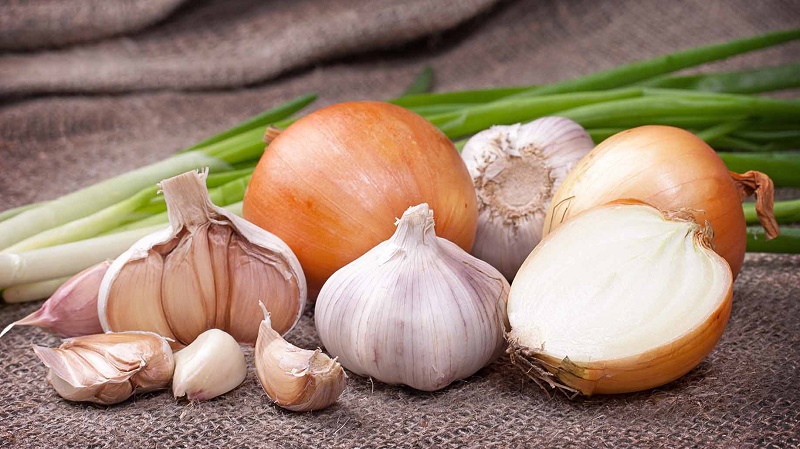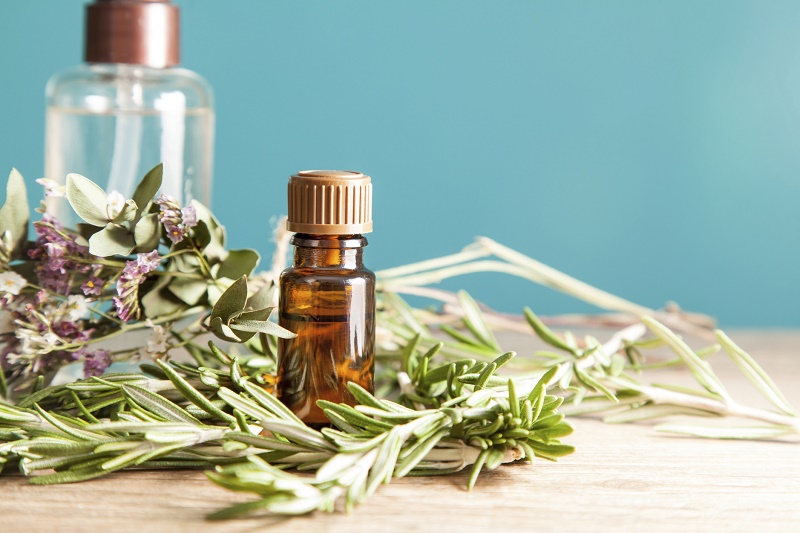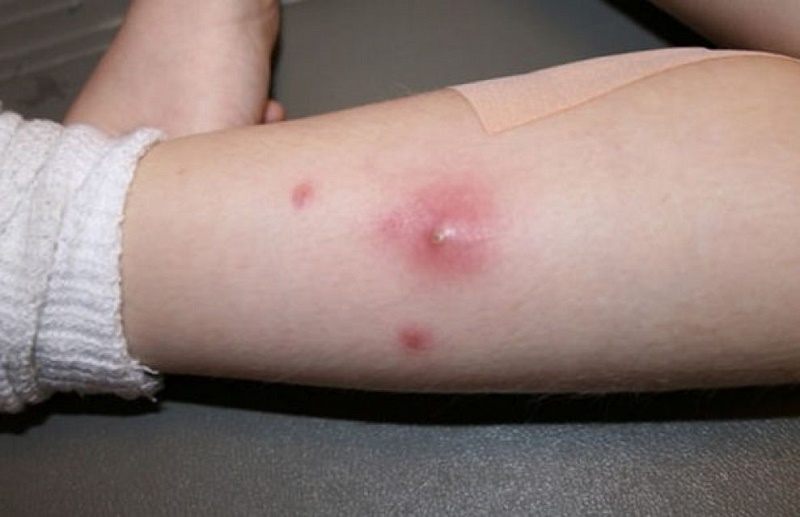The lumps or bumps that look and feel on the skin are actually mechanisms for the release of toxins. It makes them extremely contagious. In most cases of boils are caused by Staphylococcus bacteria. This germ penetrates the surface of the skin through small cuts or injuries. It can even enter the body through the hair cavities. In this article, we are going to tell you how to get rid of boils and 10 effective remedies for the boil.
A number of factors contribute to the susceptibility of an individual to this type of skin infection such as, for example, diabetes, immune system problems, poor diet, lack of hygiene, and exposure to chemicals or irritants.
10 of the best home remedies that can be used in cases of boils

A short list of 10 home remedies:
- Turmeric
- Activated carbon
- Garlic and onion
- Basil or parsley leaves
- Black Cumin (Nigella sativa)
- Tea tree essential oil
- Epson salts and hot compresses
- Milk and milk cream
- Flowers of Alhova (Fenugreek)
- Cabbage
Turmeric
Very common in Indian cuisine, this warm orange spice is an excellent remedy for boils. It is a natural anti-inflammatory and antibacterial agent. When combined with dietary fat (the one that comes from the food we eat) and black pepper, it is even more effective.

How to use:
Take 1 teaspoon of turmeric powder, in half a glass of warm water, 3 times a day. Continue for several days or more if you have recurrent MRSA boils. Turmeric is used in traditional Ayurveda medicine in India thanks to its anti-inflammatory action and because it purifies the blood. In this case, there is no need to apply anything topically. You can also try mixing 1 tablespoon of turmeric with 1 cup of milk (use soy milk or rice if you suffer from lactose intolerance) and 1 tablespoon of molasses, which is rich in iron and B vitamins. Warm milk without boiling, add turmeric and molasses. Stir well before drinking since turmeric tends to settle to the bottom of the cup.
Turmeric can cause intense dehydration, especially at night, so be sure to follow any of these remedies with several glasses of natural water.
Activated carbon
When the coal is subjected to water vapor and oxygen, small pores are created on its surface. It is then called activated carbon because these pores are active and are able to trap many chemical compounds, especially those that are not attracted to water, such as organic compounds (compounds that come from living organisms). A paste made of activated charcoal powder and water will extract heat and pus from a boil quickly. Cover the lesion with the paste and then with a piece of damp cotton and a plastic cover to prevent it from drying out. Let stand for a couple of hours and repeat until you have drained all the pus from the boil.

How to use:
Make a paste with 1 clove of crushed garlic, 1/2 teaspoon of powdered activated carbon and 1 teaspoon of turmeric, with a little hot water. Dip a piece of gauze in this mixture, place on the boil and fix with surgical tape. Repeat every couple of hours until the boil bursts on its own and drains profusely.
Garlic and onion
Garlic and onions contain sulfur compounds that can help eliminate bacterial infections.
In case the boil is in an incipient state (the lump is red and painful to the touch), its evolution can be stopped by the application of garlic juice. Take a fresh garlic clove, peel and cut at one end, and squeeze to release the juices. The juice obtained is applied directly to the reddish skin. Repeat the procedure twice a day. The injury will recede and in a couple of days it will dry up. Pay attention: apply only the oily juice of the garlic, do not put the slices on the skin as it can burn it and cause other unpleasant effects.

How to use:
If the boil is in an advanced stage (the pus is already formed or is forming, or if the pus is leaking) the remedy is onion. Cut a slice 1.5 cm thick. Apply over the injury under a bandage. Renew the bandage twice a day. When you change it, clean the area with chamomile tea. Due to its suction power and its antimicrobial and anti-inflammatory action, the pus will drain completely.
Basil or parsley leaves
Parsley has endless applications when it comes to home remedies and can be effective for the treatment of boils. Boil a handful of parsley in water until the leaves soften. Once it cools a little, wrap the leaves in a piece of sterile gauze and apply directly over the boil.

How to use:
Basil can also be used as a natural poultice and is, therefore, a very effective home remedy for boils. Crush a few leaves of basil to extract a little juice. Apply directly to the boil after you have cleaned the affected area with warm water. Basil is antibacterial and can kill the bacteria that cause these injuries.
Black Cumin (Nigella sativa)
Black cumin is a powerful antibacterial, antimicrobial, anti-inflammatory and also has antiseptic properties.

How to use:
Grind a handful of black cumin seeds with a little water until you get a thick, thin paste. Apply on the boils and let it dry. Make a new application every two hours, every day until it breaks and you have drained all the pus. Clean the area of the lesion with boiled water and some antiseptic soap or apply a few drops of tea tree essential oil.
Tea tree essential oil
Tea tree oil can help get rid of the infection very quickly and speed up the healing process. Its powerful antiseptic and anti-inflammatory properties also relieve pain and relieve itching.

How to use:
Apply 3-4 drops directly on the boil. Repeat 4-5 times a day until the lesion disappears. This is one of the few essential oils that can be applied to the skin without first diluting.
Epsom salts and hot compresses
Taking baths in warm water, mixed with Epsom salts can also help get rid of boils? Drink plenty of water to help the body eliminate toxins. While you take your bath, drink a couple of cups of green tea.

How to use:
The application of compresses with hot cloths is also a way to cure boils. Dip a clean cloth in warm salty water and place it over the lesion for 10-12 minutes. Make sure the compress is very wet and warm. Repeat the process at least 4-6 times a day.
Milk and milk cream
Milk has been used as a treatment for boils for a long time. Accelerates the healing process and provides immediate pain relief.

How to use:
Heat a cup of milk and add, one by one, three teaspoons of salt. Mix well to make the salt dissolve. Add a little flour to thicken the mixture. When it has cooled a bit, apply directly to the boil. Let stand for 10-15 minutes. Repeat the process several times a day.
You can also try mixing a teaspoon of cream, 1/2 teaspoon of cider vinegar and 1 teaspoon of turmeric powder. Apply the paste directly to the lesion. Let stand for 10-15 minutes. Repeat the process several times a day.
Flowers of Alhova (Fenugreek)

They facilitate the drainage and cleaning of the skin. Boil a handful of flowering fenugreek tops in a small amount of water, allowing the liquid to evaporate. Distribute the boiled flowers on gauze and apply hot on the boil. Repeat several times a day.
Cabbage
The leaves of cabbage or cabbage can be used as a poultice. The sheets must be previously squeezed on a smooth surface with the help of a roller or a cylindrical bottle, as well as when the dough is spread over a pie. They can also be heated with the help of an iron. They are applied to the skin as a dressing.
What happens if boils are not treated?
As long as there are infection and pus on the skin, there is a risk that some germs (bacteria) may spread into the bloodstream and cause infections in other parts of the body. This is not very common, but, if it occurs, it can lead to serious infections in the bones, brain or other parts of the body.
Recurrent boils
If you develop recurring boils, it is very important that you visit your doctor. He can suggest some tests to look for the underlying cause. For example, to check if you have a poor immune system.
One cause of recurrent boils in a person who is otherwise healthy is that they can be carriers of staphylococcal bacteria resistant to antibiotics. This means that a certain number of these bacteria live on the skin or in the nose. If you are a carrier, you will be more likely to develop boils. These bacteria can invade and multiply rapidly in small skin lesions (wounds or cuts).
You should seek medical attention if:
- Start having a fever.
- Have swollen lymph nodes.
- It has red skin around the boil and red streaks.
- Feel a severe pain.
- Note that the boil cannot drain.
- Note that one or more boils are appearing.
- Have a heart murmur, have diabetes or any problem with your immune system, or use immunosuppressant medications (e.g., corticosteroids or chemotherapy drugs).
There is the talk of a boil when the infection occurs in a hair follicle or sebaceous gland. (Most of the skin is covered with tiny hairs that grow from the hair follicles.) It appears as a small red bump and the skin around it swells and swells. A thick, infected fluid called pus fills the center of the lesion. When a group of adjacent hair follicles becomes infected it is called a carbuncle or anthrax. In this case, multiple boils are produced. There is the talk of chronic furunculosis when there is a culture of boils that occur over a period of time. These can be developed continuously or from time to time.
Why are antibiotics sometimes not effective?
Sometimes the infection is caused by methicillin-resistant Staphylococcus aureus (MRSA). A strain of the bacteria that has become resistant to antibiotics commonly used to treat infections caused by normal staph. As a general rule, the use of antibiotics is the most efficient way to treat this problem. However, if the infection comes from an antibiotic-resistant strain, once the treatment is stopped, the infection can reappear. In addition, antibiotics change the natural balance of bacteria in the body, which can cause additional problems.
How to treat boils?
Of course, hygiene is one of the most important considerations. However, there are several natural remedies that applied to help the body eliminate infection and relieve inflammation.
The natural treatments on how to get rid of boils will surely bring some relief. As long as the remedies kept for a few days to see the positive results. If after a week no relief perceived, then consult with a specialized doctor.
You may also like Memory loss: 7 tips to improve memory in the home




